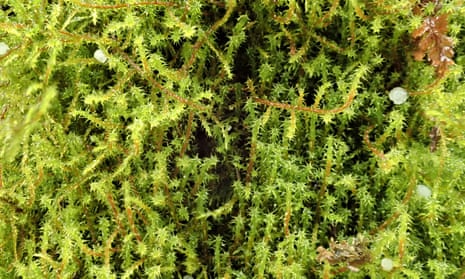Why is it that we care so little for mosses, except perhaps to kill them? If you Google the words “moss treatment”, it gets 200 million hits, but “bryology” – the study of mosses and bryophytes (including liverworts and hornworts) – returns a figure of just 490,000.
Even botanists acknowledge, however, that mosses are hard to identify. The excellent starter guide by the Species Recovery Trust, which has been my trusty lantern into this previously shadowed realm, describes mosses as the botanist’s “final frontier”.
The stark, leaf-free conditions of spring make mosses easier to notice, but I must confess that the season has involved more darkness than light. My default office scenario involves a screen of five website pages, simultaneous with four of my images, a scatter of opened books, all hand annotated now, mostly with crossed-out names. Yet I’ve already enriched my life – and vocabulary – with new acquaintances such as wall screw‑moss or grey-cushioned grimmia and springy turf-moss.

The last, incidentally, is probably the species that inspires most of those online hits for “moss treatment”. It’s a common lawn visitor. If only people looked closer they would see what bryologists love about Rhytidiadelphus squarrosus: the way that the pointed leaves bend back at right angles from a gloriously red stem so that each spike ends in a tiny, soft, glittering star. It is both exquisite and awesome because to study mosses is to ponder deep time: their ancestors first evolved in the Ordovician, 470m years ago.
If mosses are wonderful, then liverworts are bizarre. As the name may indicate, many are primitive, flattened, fleshy layers of aqueous green, usually in conditions of permanent wetness. Riverbanks are a common haunt. Many require a hand lens for true appreciation, and an old wet gritstone quarry has become a favourite personal site. Most of the time I’ve no idea what I’m looking at, but to peer into the liverwort’s realm, albeit magnified 10 times by my lens, is to look into the glistening oesophageal depths of some unknown, previously unimagined life.
This, I suppose, has been the bryophytes’ gift this year: a recognition that beyond the “homolith” – the superabundant detritus smothered by our species across the landscape – is another wild world still untouched and probably unassailable.
